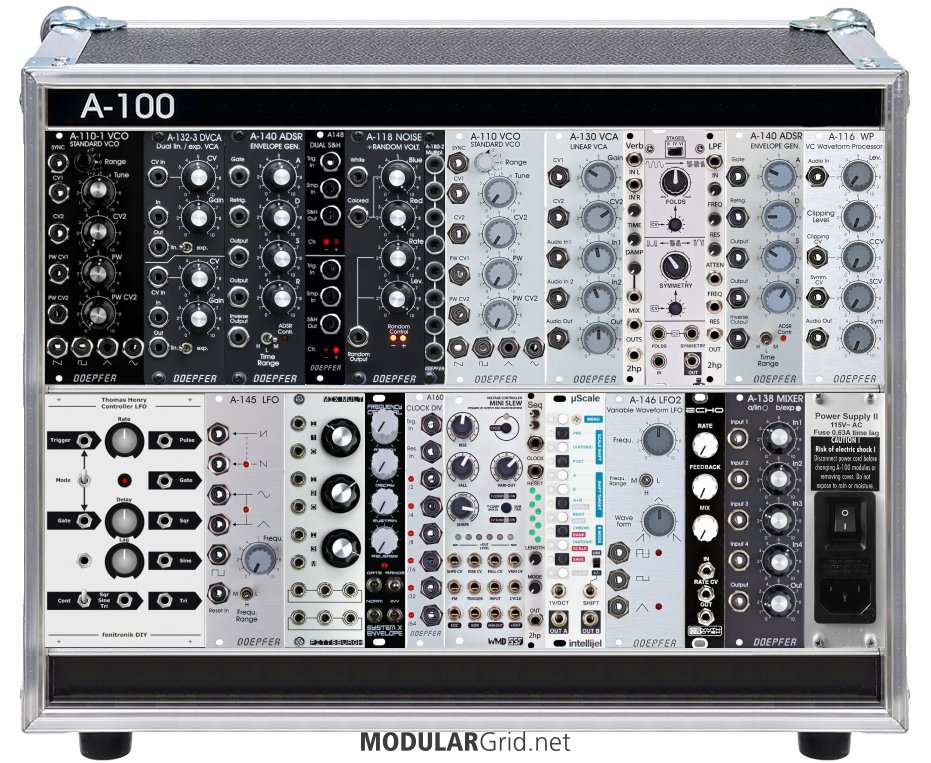That's not a proper power supply, btw. That power inlet was discontinued by Doepfer a loooooong time ago. Also, in a build of this size, you need to do two important things.
1) see how much of the functionality can be shrunk down by using multifunction modules. For example, you have four LFOs in a total of 32 hp. This isn't a very efficient use of panel space. If you were to use, say, two Xaoc Batumis and a 4ms QPLFO, that also comes out to 32 hp...but gives you 12 LFOs to work with. Now, that many LFOs might not work for you, but it indicates that you could easily jam all four LFOs into a mere ten or twelve hp instead and open up room for more possibilities (like more VCAs, for example).
2) collect your module functions. Put all the VCOs in one area, all the LFOs, EGs, etc. This makes a build way easier to navigate, especially for live performance work. Right now, this build is pretty hodge-podged, and while that might make sense in a studio setting, if you ever perform live with this system as it currently stands, you won't have a lot of fun.
The other thing is something that Dom78 touches on: discontinued modules. I see four in this build right off the bat. Always keep an eye out for status markers here on MG that indicate a module is discontinued. But even with that, also check to see if a manufacturer has a "mk 2" version of something, such as that Intellijel waveshaper; there's been a second version of that on the market for about five years, and when manufacturers issue these newer versions you can generally assume that the original isn't being manufactured anymore. It's quite rare to see a "mk 1" and "mk 2" of a module on sale simultaneously. Now, not everything in MG is properly marked...while this site is considered the 'standard reference' for synthesizer modules, its user-driven aspect doesn't always mean that the precise correct info gets on here, and if no one corrects errors when they turn up, things stay like that. So when you arrive at a build that seems to work for you, checking the module availability with vendor websites is a must.
As to why the 'obsolete' modules are on here...well, that again goes back to MG being that 'standard reference'. The idea is to have the 'obsolete' modules as well because someone might have them in their rig or have found some in the used market, and they'd like to see how they might fit in their own system build.
One other thing I would suggest doing: start with a rack that you think is "too big". If you have 2 x 84 hp, try 104 hp or 126 hp out for starters. It's easy enough to scale back, and MG is the perfect place to sandbox ideas until you have something that feels like it would work as a real device. Plus, don't aim for the perfect build on the first try...or the tenth...or 100th. Just create, and watch for areas in a build that have a good 'feel' to them, then make a note of that and repeat what worked in the next iteration. By honing down your eventual physical build in this way, you will save a lot of time, money, headaches, and even learn quite a bit in the process.

